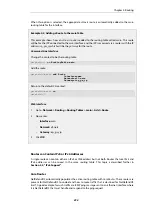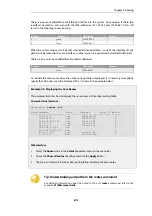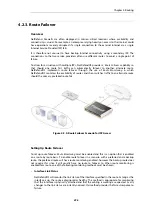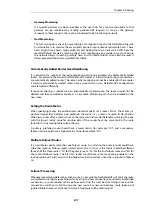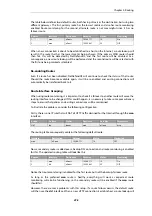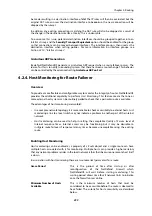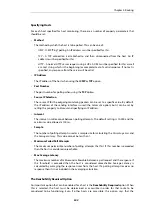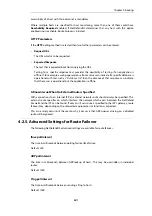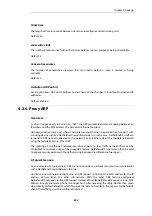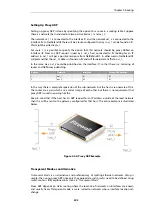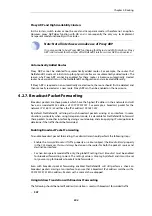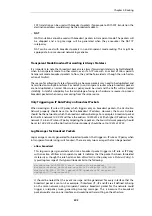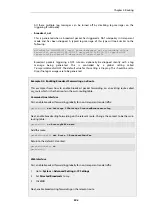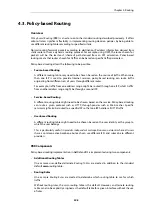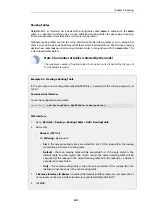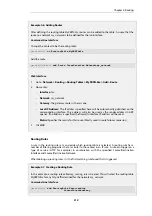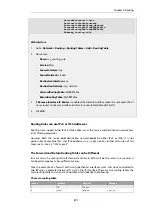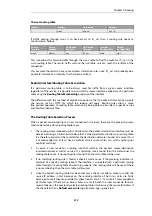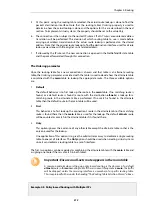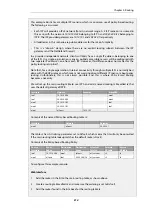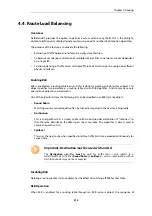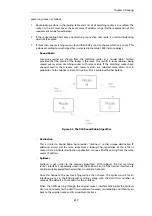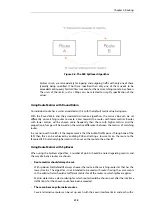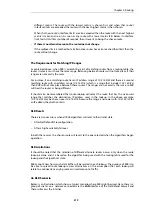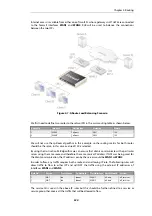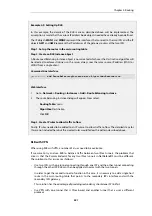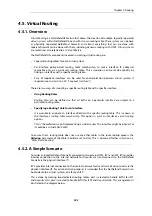
4.3. Policy-based Routing
Overview
Policy-based Routing
(PBR) is an extension to the standard routing described previously. It offers
administrators significant flexibility in implementing routing decision policies by being able to
use different routing tables according to specified criteria.
Normal routing forwards packets according to destination IP address information derived from
static routes or from a dynamic routing protocol. For example, using OSPF, the route chosen for
packets will be the least-cost (shortest) path derived from an SPF calculation. Policy-based
routing means that routes chosen for traffic can be based on specific traffic parameters.
Policy-based routing allows the following to be possible:
•
Source-based Routing
A different routing table may need to be chosen based on the source of traffic. When more
than one ISP is used to provide Internet services, policy-based routing can route traffic
originating from different sets of users through different routes.
For example, traffic from one address range might be routed through one ISP, whilst traffic
from another address range might be through a second ISP.
•
Service-based Routing
A different routing table might need to be chosen based on the service. Policy-based routing
can route a given protocol such as HTTP, through proxies such as Web caches. Specific
services might also be routed to a specific ISP so that one ISP handles all HTTP traffic.
•
User-based Routing
A different routing table might need to be chosen based on the user identity or the
group
to
which the user belongs.
This is particularly useful in
provider-independent metropolitan area networks
where all users
share a common active backbone but each can use different ISPs and subscribe to different
providers.
PBR Components
Policy-based routing implementation in NetDefendOS is implemented using two components:
•
Additional Routing Tables
One or more user-defined alternate
Routing Tables
are created in addition to the standard
default main routing table.
•
Routing Rules
One or more
Routing Rules
are created to determine which routing table to use for which
traffic.
Without routing rules, the
main
routing table is the default. However, an alternate routing
table can also be explicitly assigned as the default table for a given interface without the use
of rules.
Chapter 4: Routing
308
Summary of Contents for NetDefendOS
Page 30: ...Figure 1 3 Packet Flow Schematic Part III Chapter 1 NetDefendOS Overview 30 ...
Page 32: ...Chapter 1 NetDefendOS Overview 32 ...
Page 144: ...Chapter 2 Management and Maintenance 144 ...
Page 284: ...Chapter 3 Fundamentals 284 ...
Page 392: ...Chapter 4 Routing 392 ...
Page 419: ... Host 2001 DB8 1 MAC 00 90 12 13 14 15 5 Click OK Chapter 5 DHCP Services 419 ...
Page 420: ...Chapter 5 DHCP Services 420 ...
Page 573: ...Chapter 6 Security Mechanisms 573 ...
Page 607: ...Chapter 7 Address Translation 607 ...
Page 666: ...Chapter 8 User Authentication 666 ...
Page 775: ...Chapter 9 VPN 775 ...
Page 819: ...Chapter 10 Traffic Management 819 ...
Page 842: ...Chapter 11 High Availability 842 ...
Page 866: ...Default Enabled Chapter 13 Advanced Settings 866 ...
Page 879: ...Chapter 13 Advanced Settings 879 ...

